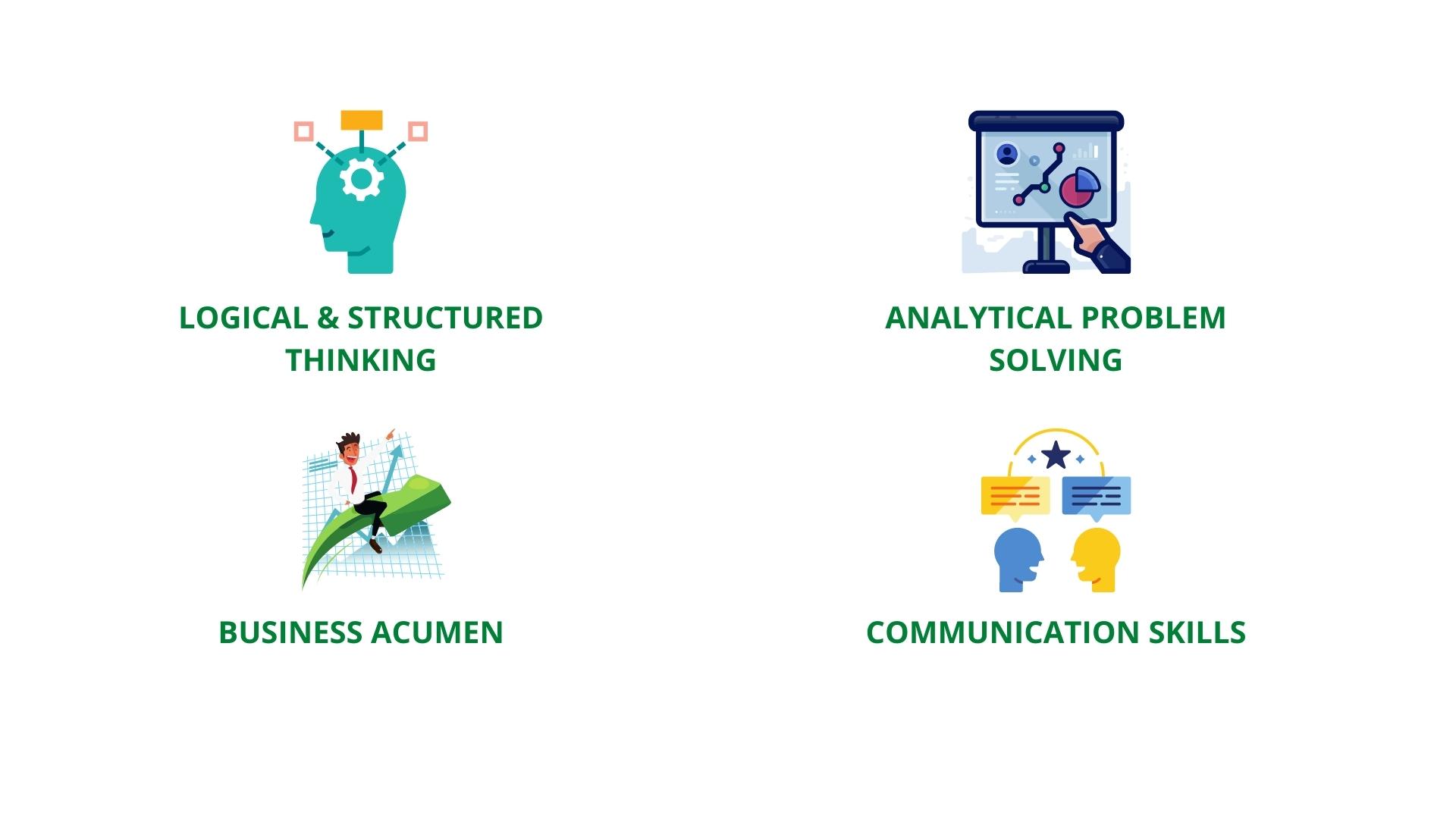Once you analyse a given marketing case, the next question arises about how do you present a marketing case study. As a marketing student, you may have faced the dilemma of how do you present a marketing case study effectively.
Since the marketing case studies are an indispensable part of course discussion and interviews. In this chapter, I will focus on how to communicate your analysis effectively.
Skills for presenting a marketing case
An evaluator typically assesses the qualities that a future consultant or a CEO/CMO of a company will require. The purpose of a marketing case study is to catalyse budding professionals like you to think innovatively and give a simulation of the real-world complexities.
Let us now look at the skills typically assessed and looked for in a budding professional by giving a marketing case study.

- Logical and Structured thinking: As a future consultant, you need to be organised and methodological in your approach to chart down practical recommendations.
- Analytical problem solving: To generate solutions for complicated situations, you must deal with massive amounts of data and information. The case studies thus typically will throw a lot of data to you, which you have to process for devising your recommendations.
- Business Acumen: a strong business instinct will help you make better judgments and produce better suggestions for the case study.
- Communication Skills: You must develop excellent communication skills to ace a marketing case study in terms of both presentation and verbal skills. As a future consultant, you will be required to work effectively with teams and clients. Hence, this skill is considered very important for a budding marketing professional.
You can also refer to this e-book for understanding how a marketing case study helps you to hone your skills as a future business executive.
How do you present a marketing case study?
Let us now see how you can present your analysis and findings in four simple steps given below.
- Dividing the bigger picture into small parts
The first step for you will be to divide the given problem into smaller, more manageable components. You might split the question down into phases or more minor concerns that you can handle one at a time.
Breaking the bigger challenge into smaller parts will help you focus on one challenge at a time and help you to formulate an end-to-end plan to address the issue.
- Defining each smaller part
The next step is to explain and define each part, likely reflecting a different business challenge. Explaining how you identified these difficulties and why you chose to focus on them will help the evaluator comprehend your thought process. This will also help you to define your recommendations easily.
- Compliment with figures and statistics
The next step is to support your proposed solutions with relevant data, figures or statistics based on primary or secondary research. Using numbers to back up your answer demonstrates that you know how to work with data and provide more authenticity to the solutions.
- Focus on Communication
Once done with all the technical aspects, the most important step to focus on is communication styles. This is the step where you have to hit the nail on the head. Step in the shoes of your evaluator and then modify your communication approach to match their demands. For example, you may explain crucial words in your response or avoid unnecessarily technical explanations depending on your target audience.
Bridging the gap
Now that you have understood all the aspects of marketing case studies in detail, it is time to further enrich your marketing knowledge and expertise. Your analyses and recommendations will be more appropriate and feasible if you have a better understanding and clarity of concepts.
Apart from the theoretical knowledge and concepts, it is also essential to have exposure to marketing situations in the real world because that will help you bridge the gap between the academic and practical world. To bridge this gap, I have given you some examples of marketing case studies in the next chapter.

